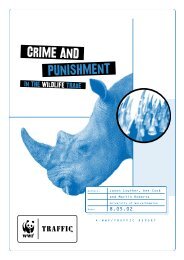Deeper Luxury Report - WWF UK
Deeper Luxury Report - WWF UK
Deeper Luxury Report - WWF UK
You also want an ePaper? Increase the reach of your titles
YUMPU automatically turns print PDFs into web optimized ePapers that Google loves.
Signs of change<br />
Notwithstanding the efforts described above, and despite<br />
the practical and economic potential of the luxury industry<br />
to pioneer a more sustainable model (see Chapters 2<br />
and 3) luxury companies are failing to embrace social<br />
and environmental challenges as part of their core<br />
business strategies. Instead, we are seeing piecemeal<br />
approaches to corporate social responsibility. Despite<br />
recognition among some executives of the need for<br />
greater depth in their offering, there remains a reluctance<br />
to face the challenge of sustainable consumption in a<br />
broader, systemic way.<br />
Some in the industry have recognised the need to<br />
offer reassurance on social and environmental issues.<br />
However, this is usually limited to “glam philanthropy” –<br />
giving to high-profile projects that involve events with<br />
celebrities. Omega, of the Swatch Group, is sponsoring<br />
a project that aims to fly a solar plane around the world. 112<br />
TAG Heuer is raising funds for the United Nations<br />
Development Fund for Women (UNIFEM) through a<br />
series of photographic exhibitions in which the world’s<br />
top female photographers present portraits of exceptional<br />
women, as well as events featuring TAG representatives<br />
such as actress Uma Thurman. However, the company<br />
offers no information on its website about its workplace<br />
and supply chain diversity policies and performance –<br />
and this in a year when its parent company was excluded<br />
from the FTSE4Good index on the basis of a lack of such<br />
policies for its own supply chains.<br />
Some brands have begun to bring their philanthropic<br />
work into their advertising – for example, Baume and<br />
Mercier, the Richemont-owned Swiss watch company,<br />
featured celebrities mentioning donations to charitable<br />
causes. The International Herald Tribune reported that<br />
Louis Vuitton’s 2007 advertising campaign featuring<br />
Mikhail Gorbachev “reflects a move by some luxury<br />
companies to connect with consumers on a more human<br />
level. In the past, many fashion houses and other luxury<br />
brands relied primarily on the so-called product-as-hero<br />
approach, featuring their products, perhaps accompanied<br />
by a model, in a stylised, static way.” The adverts mention<br />
donations to environmental organisations. 113<br />
Often without a connection to charity, luxury brands are<br />
seeking to relate to contemporary human concerns such<br />
as scarcities of time, personal energy and connectedness.<br />
But even these attempts can be misguided if the<br />
consequences are not thoroughly thought through. In<br />
its 2007 marketing campaign, luxury car maker Bentley<br />
states: “The greatest luxury in life is time. Savour every<br />
second.” This invitation to savour time by speeding up<br />
global warming epitomises the shallow attempts at depth<br />
that currently pervade the luxury sector.<br />
As evidenced in this chapter, consumer needs and<br />
concerns too often fail to inform the policies, processes<br />
and cultures of brand-owning companies. The diverse<br />
issues described here all relate to the business challenge<br />
of creating a sustainable economy, for a one planet<br />
future, as described in Chapter 1. The lack of explicit<br />
policies, systematic programmes, stakeholder dialogues<br />
and comprehensive sustainability reporting by most<br />
luxury brands indicates that they lack a full understanding<br />
of the strategic corporate imperative of sustainable<br />
development. Watch industry expert Marie Le Berre<br />
writes that “while a number of watchmaking brands<br />
have invested in actions in favour of solidarity, they<br />
have been slow... to produce detailed reports on...<br />
the social responsibility of companies”. 114<br />
<strong>WWF</strong> believes that companies can partner with NGOs<br />
to move forward more effectively. For instance, <strong>WWF</strong><br />
US has partnered with Tiffany & Co to build support for<br />
a marine protected area in the Indo-Pacific Coral Triangle,<br />
one of the most important source regions for pearls on<br />
the planet, as well as exchanging information on how<br />
to define and encourage more responsible mining.<br />
Given that there is both a business and social case for<br />
luxury brands to excel in this area, we promote<br />
transparency by introducing a ranking of performance in<br />
the next chapter.<br />
<strong>Deeper</strong> <strong>Luxury</strong><br />
30/31


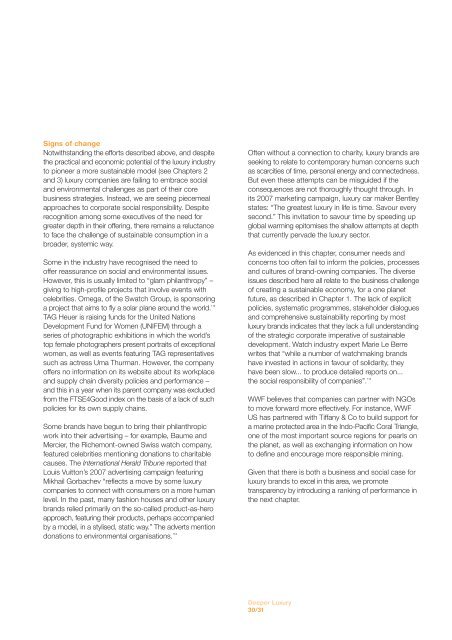
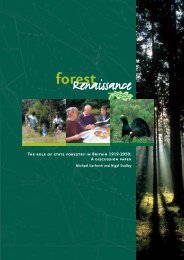
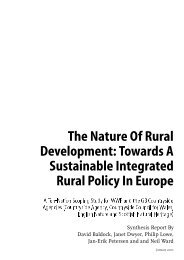
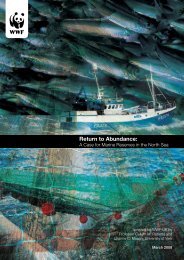
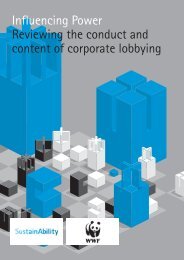



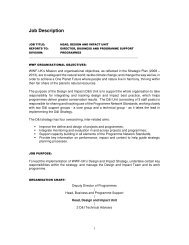

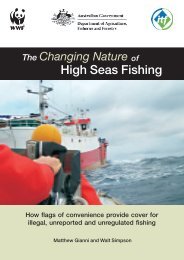
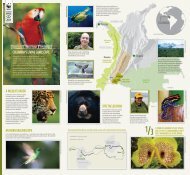
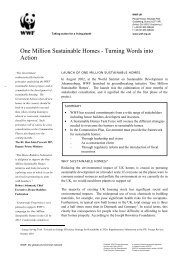
![[PDF] Causes for concern: chemicals and wildlife - WWF UK](https://img.yumpu.com/31929970/1/184x260/pdf-causes-for-concern-chemicals-and-wildlife-wwf-uk.jpg?quality=85)
